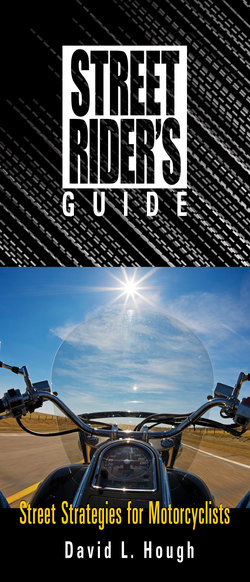Читать книгу Street Rider's Guide - David L. Hough - Страница 9
ОглавлениеBlind Drivers
If you ride in a driver’s blind spot, you’re risking a collision.
With gas prices on the rise, you’re riding the bike to work more and more. While driving your car, you hadn’t been as aware of the complexities of traffic, but riding the bike, you’re getting a quick education. Riding the bike takes a lot more concentration. There’s no such thing as a simple “fender bender” for a motorcyclist.
The weather wasn’t bad this morning, but on your commute home it’s started to rain, causing you some additional concern. You try to stay out of the center of the lane to avoid the usual grease strip, and you leave lots of following distance behind the car ahead in case traffic begins to slow.
Suddenly, the van on your left swerves into your lane, almost running into you. You’re startled by the sudden intrusion, but you manage to swerve over to the right edge of the lane and blow your horn. The van driver doesn’t seem to notice and keeps moving right, across your lane and into the next lane. Apparently, he’s headed for the next off-ramp. As you’re forced into the exit lane, you finally realize what’s happening and gingerly reach for the front brake. You barely managed to avoid being sideswiped by the van, and you’re furious.
Yes, the van driver was at fault for changing lanes without signaling, but you set yourself up for a collision by riding in the driver’s blind spot. Most vehicles have blind spots at the rear quarters, left and right. The driver very likely couldn’t see you there, especially with his or her windows and mirrors wet and foggy. In this situation, you should have either pulled up ahead of the van or dropped back farther behind it to give the driver a better chance of noticing you. And when he did pull over, you should have immediately eased on the brakes to separate yourself.
